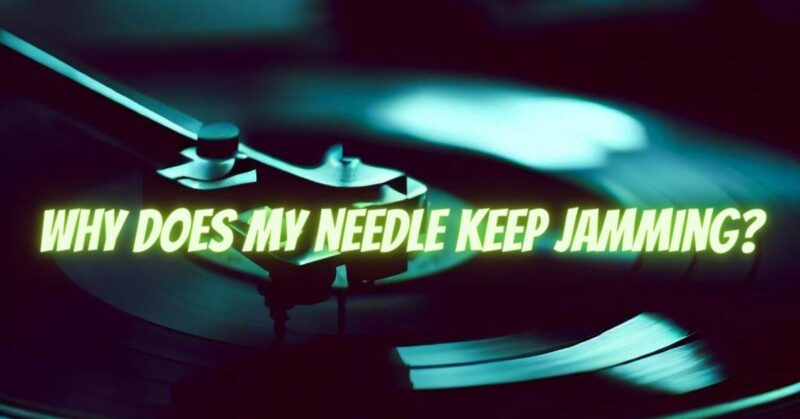Experiencing a needle jamming issue can be frustrating when trying to enjoy your vinyl collection on a turntable. A needle jam can prevent proper playback, cause skips, or even damage your records. Several factors can contribute to this problem, including mechanical issues, misalignment, or worn-out components. In this article, we will explore common reasons why a needle may keep jamming and provide troubleshooting tips to help you resolve the issue.
- Dust and Debris:
Accumulated dust, dirt, or debris on the needle or record surface can interfere with smooth needle movement and cause jamming. Ensure that both the needle and records are clean before each use. Use a soft brush or a record cleaning brush to remove any particles from the record surface. Additionally, gently clean the stylus with a stylus brush or a stylus cleaning solution to ensure optimal performance.
- Worn or Damaged Stylus:
A worn or damaged stylus can lead to needle jamming. Inspect the stylus under a magnifying glass or microscope for signs of wear, such as a flattened or chipped tip. If the stylus appears worn or damaged, it is crucial to replace it with a new one. A fresh stylus ensures smooth tracking and reduces the risk of needle jams and record damage.
- Incorrect Tracking Force:
Insufficient or excessive tracking force can cause the needle to jam or skip. Check the tracking force setting on your turntable and ensure it aligns with the specifications recommended by the cartridge manufacturer. Use a stylus pressure gauge or scale to accurately measure and adjust the tracking force. The correct tracking force ensures proper stylus contact with the record grooves, minimizing the risk of needle jams.
- Tonearm Misalignment:
Misalignment of the tonearm can result in the needle jamming or skipping. Ensure that the tonearm is properly aligned and balanced. Use a turntable alignment tool or consult the turntable’s user manual for instructions on aligning the tonearm correctly. Improper alignment can cause the needle to catch on the record grooves or skip across the surface, leading to jams.
- Worn Tonearm Bearings or Suspension:
Worn or damaged tonearm bearings or suspension can cause instability and result in needle jams. If you suspect issues with the tonearm, it may require professional servicing or repair. A qualified turntable technician can inspect the tonearm components, replace worn parts, and restore proper functionality.
- Record Condition:
Some records may have defects, warps, or imperfections that can cause the needle to jam. Inspect the record for any visible damage or warping. If a particular record consistently causes needle jams, it may be best to avoid playing it until the issue is resolved. It’s important to handle records with care and store them in a clean and controlled environment to minimize potential damage.
Conclusion:
A needle jamming issue can hinder your enjoyment of vinyl playback on a turntable. By addressing potential causes such as dust and debris, worn or damaged stylus, incorrect tracking force, tonearm misalignment, worn tonearm bearings, or record condition, you can troubleshoot and resolve the problem. Remember to handle records with care, clean them regularly, and maintain proper turntable setup and alignment. If issues persist, seeking professional assistance from a turntable technician can help diagnose and fix any underlying problems. With proper maintenance and attention to detail, you can enjoy uninterrupted and smooth playback on your turntable without needle jams.


